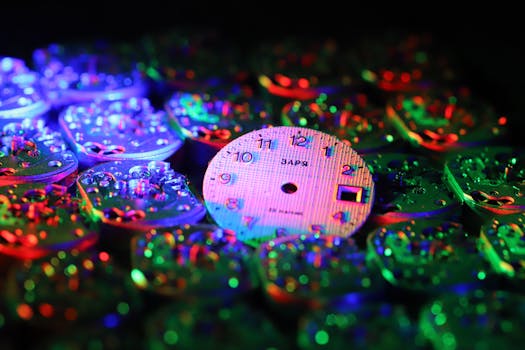
The Art of Watchmaking: Exploring the Role of Gold, Titanium, and Ceramics
Takeaways: In this article, we explore how different materials—specifically gold, titanium, and ceramics—impact the craftsmanship, functionality, and aesthetic appeal of watches. Understanding these materials can enhance your appreciation for fine timepieces and their unique characteristics.
Watchmaking is a sophisticated blend of art and science, where every component plays a critical role in the creation of a timepiece. Among the most significant elements in this intricate process are the materials used—each contributing to the watch’s overall performance, durability, and aesthetic appeal. This article delves into three of the most prominent materials in watchmaking: gold, titanium, and ceramics.
Gold: The Timeless Classic

Firstly, gold is highly resistant to corrosion and tarnishing, making it an ideal material for watches that are intended to last a lifetime. Its natural beauty and luster allow watchmakers to create stunning designs that catch the eye and evoke feelings of luxury. Additionally, gold can be alloyed with other metals to enhance its properties. For instance, rose gold, created by mixing gold with copper, has gained popularity for its warm hue and unique appearance.
In terms of functionality, gold is relatively malleable, enabling watchmakers to craft intricate details and engravings. This quality allows for greater creativity in design, allowing for personalized touches that can make a watch truly unique. Furthermore, the weight of gold adds a substantial feel to a watch, enhancing its presence on the wrist.
However, the use of gold does come with drawbacks. Its softness can make it more susceptible to scratches compared to harder materials. Therefore, while gold watches are often seen as luxury items, they require careful handling to maintain their pristine condition. Despite this, the allure of gold remains unmatched, and it continues to be a favored choice among watch enthusiasts and collectors alike.
Titanium: The Modern Marvel

Titanium is hypoallergenic, making it ideal for individuals with sensitive skin. This characteristic, combined with its resistance to corrosion, ensures that titanium watches remain in excellent condition over time. Many luxury brands have embraced titanium, creating pieces that not only perform well but also exude a contemporary aesthetic.
Moreover, titanium can be finished in various ways, including brushed, polished, or even coated in vibrant colors, allowing for unique designs that appeal to a modern audience. Brands like TAG Heuer and IWC have capitalized on titanium’s benefits, producing watches that are not only functional but also stylish and appealing to younger consumers.
However, titanium does have its limitations. While it is highly resistant to scratches, it can be challenging to work with due to its toughness. This can result in higher production costs and can limit the intricacy of designs compared to gold. Nevertheless, the benefits of titanium have led to its increasing popularity in the luxury watch segment.
Ceramics: The Innovative Choice

One of the most significant advantages of ceramics is their ability to maintain their color and finish over time. Unlike metals, which can show signs of wear and tear, ceramic can withstand the test of time, making it an excellent choice for modern watch designs. Brands such as Chanel and Rado have pioneered the use of ceramics in their collections, creating stunning pieces that stand out in any setting.
Ceramic watches can be produced in various colors, allowing for a range of creative designs that appeal to diverse tastes. The ability to customize the color enhances the watch’s appeal, making it a fashion statement as much as a functional timepiece.
However, ceramics can be brittle, which means that while they are scratch-resistant, they may not withstand impact as well as metals like titanium. This consideration is essential for buyers who lead an active lifestyle and require a watch that can endure more rigorous conditions.
Conclusion

As the watch industry continues to evolve, understanding the role of these materials can deepen your appreciation for the craftsmanship involved in creating exquisite timepieces. Whether you prefer the timeless elegance of gold, the robust nature of titanium, or the contemporary charm of ceramics, each material contributes to the rich tapestry of horology.







